How to Weld Galvanized Steel: Methodologies and Tips
Last Updated on
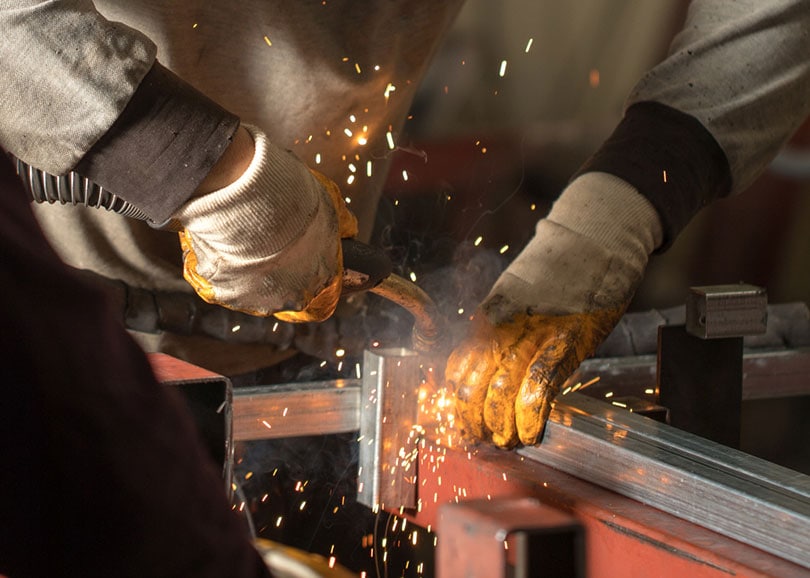
Galvanized steel is steel that has been coated in zinc to protect it from corrosion. The zinc coating acts as a barrier between the steel and the elements, and it helps prevent rust and other forms of corrosion. However, welding galvanized steel can be tricky because the zinc coating can make it difficult for the weld to penetrate the metal, and it can also cause the weld to splatter.
There are a few things that you need to keep in mind when welding galvanized steel. First, it’s important to use the right type of welding wire. Second, you need to use the right welding techniques. And third, you need to take some precautions to protect yourself from the fumes.
In this article, we delve deeper into each of these topics to help you weld galvanized steel like a pro using different methodologies.
Before You Start—Preparations
Clean Welding Area
Before starting, make sure your work area is clean and free from debris.
Place a piece of scrap wood on your workbench. Then, set your welder on top at least 12 inches away from where you’ll be working to prevent sparks from landing on your workbench or floor when welding.
Clean the Galvanized Steel
Using a wire brush, remove any loose paint or rust from the surface of each piece of the galvanized steel. Be careful not to damage the metal with too much pressure. It will work even better if you have an angle grinder with a wire brush attachment.
Wear Protective Gear
When welding galvanized steel, it’s important to take some precautions to protect yourself from the fumes. The zinc in the galvanized coating can be toxic if inhaled. Protective equipment includes gloves, eyewear, and a mask or respirator. This gear protects you from harmful fumes released during welding and accidents that may occur. You should also wear long sleeves and pants. Sparks from the welded metal can burn exposed skin or clothing.
If you’re welding galvanized steel indoors, ensure there’s proper ventilation as well.
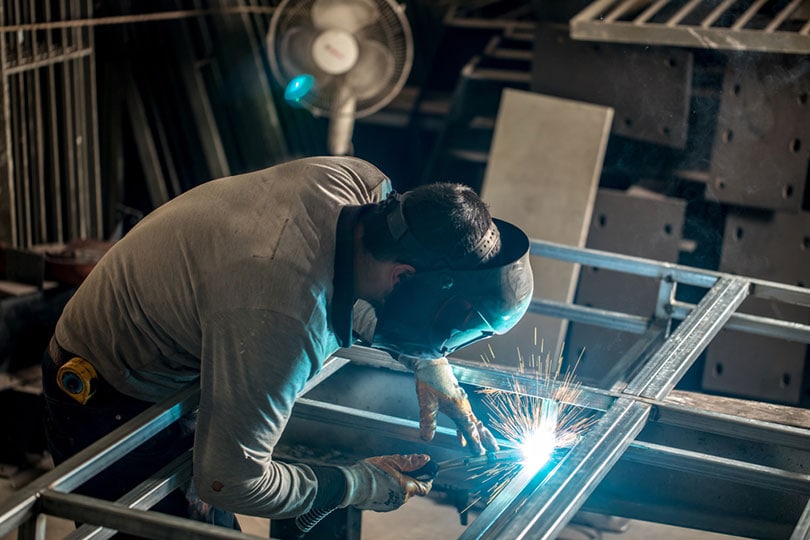
Welding Galvanized Steel: Step-By-Step Tutorial for Different Methodologies
Before you get started, understand what type of material you’re working with and how it reacts to heat and stress.
For example, galvanized steel has a layer of zinc coating over the top. In many welding processes, you must remove the zinc coating because the zinc coating will melt when heated, which can cause porosity in your finished weld. The best way to remove this zinc coating is by grinding it off using an angle grinder.
The best method of welding galvanized steel is stick welding, but we have discussed several other methods below.
1. Stick Welding (SMAW)
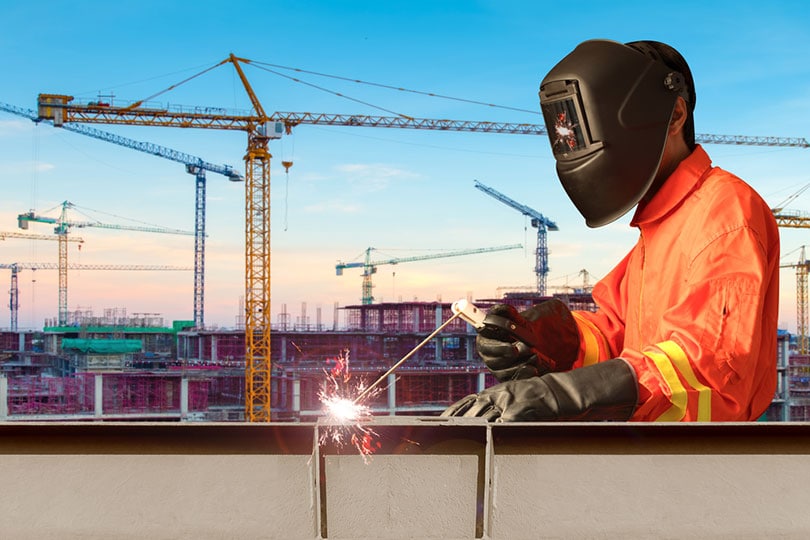
Stick welding is one of the most popular methods and also the simplest and fastest. It’s also ideal for beginners.
When using stick welding, always weld outside to prevent fumes. Also, put on a welding respirator.
- Wire brush
- Welding rods
- Stick welder
- Grit flap disc
- Zinc-rich paint
- Use a wire brush and a rag to clean around the joint
- Choose a suitable stick welding rod. The ideal stick welding rods for galvanized steel are the E6011 and the E6010.
- Prepare the welding joint and clamp the workpieces. Ensure you leave a broader root gap than the ordinary if you have a butt joint. Also, ensure the clamp is secure.
- Set the welding machine to the correct amperage. If you’re welding fillet welds, increase the amperage.
- Then, tack the metals to avoid distortion and keep the metal in position. The metal’s thickness determines the tacking length.
- Start welding your galvanized steel.
- As soon as you finish welding, re-galvanize your metal. Use a 40 to 60 grit flap disc to grind the joint. Then, spray zinc-rich paint on all welded spots.
- E6010: If you are a hobbyist or need a low-cost alternative, this is an excellent choice.
- E6011: This electrode has more tensile strength than E6010-L but costs more.
2. MIG/Gas Metal Arc Welding (GMAW)
https://www.instagram.com/p/B9Aw3ZanPS3/
For this method, it’s best to use a high-quality GMAW machine, one that has enough power and control over the speed of your welds. It should also have an appropriate filler wire.
- MIG welder
- Wire brush
- MIG gun
- Galvanized spray or zinc paint
- Set up your welding machine and set the voltage, wire diameter, and amperage to fit the thickness of your metal.
- Apply a thin coat of flux to the metal using a brush or rag. It helps prevent oxidation at the beginning of the weld.
- Use your MIG gun to lay down a bead. Let it cover about half of the joint you’re welding. Begin at one end, then move back to cover the rest of the joint.
- Once you have finished laying down a bead, pause for about 15 seconds. Then, continue with another weld bead on top of it. It allows for cooling time so that your welds don’t crack when they cool down too quickly.
- Continue this process until you have completely covered both sides of your joint in welds.
- Once you’re done welding, apply zinc paint or galvanized spray. Then, allow it to dry.
3. Flux Core Arc Welding (FCAW)
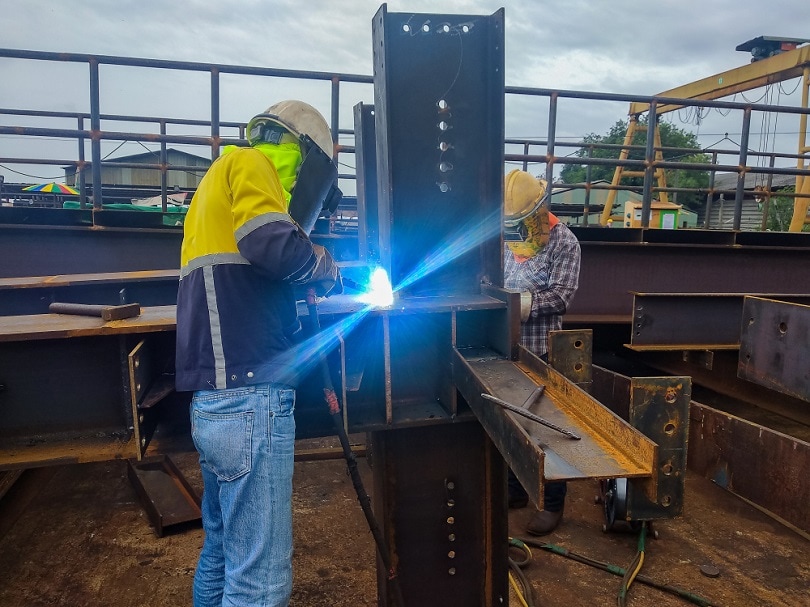
Flux core welding is an excellent way to weld galvanized steel. It’s non-destructive, and you can use it in smaller spaces where other types of welding may not be possible. The welding process is also much easier than MIG welding since fewer steps are involved.
The equipment isn’t as expensive either. So, it’s more cost-effective for DIYers looking for a permanent solution to their welding projects.
The best flux-cored wire you can use is the E71T-14.
- Protective gear
- MIG welder
- Galvanized spray or zinc paint
- Wire brush
- Filler rod
- Angle grinder
- First, grind the zinc layer off. It’s a safe process if you’re welding using the Flux Core welding method. Welding galvanized steel without removing the zinc layer gives off toxic fumes.
- Prepare the workpieces you’re welding and tack weld.
- Change the filler rod or wire to flux-cored if you’ll be using a MIG welder.
- Then, make other changes, such as the welding polarity to DC negative.
- Choose a flux-cored wire and use the process of ‘pulling the weld pool forward.’ The process produces a better weld.
- Clean the slag and spatter at intervals if the weld length is long.
- Once you finish welding, apply corrosion-resistant paint containing zinc. You can also use a galvanized spray. It forms a protective coating on your weld bead. Apply or spray it on the surrounding area to make it resistant to corrosion.
Point to Note: TIG welding galvanized steel is not a good idea. It’s because the heat will melt the zinc coating. Also, it’ll cause it to spill out onto the base metal, creating a hole that you must repair.
Helpful Tips When Welding Galvanized Steel
Welding galvanized steel can be tricky due to the presence of zinc. Here are several helpful tips that come in handy when welding galvanized steel.
https://www.instagram.com/p/BtmpqkYjFpB/
The Right Welding Wire
When welding galvanized steel, it’s important to use a wire that is specifically designed for this purpose. This type of wire is usually termed “galvanized steel wire” or “GMW.” It is different from regular welding wire because it has a higher content of zinc. This helps to prevent the zinc coating from being eroded during the welding process.
The Right Welding Techniques
A crucial tip for welding galvanized steel is to use the correct weld joint design and method of application. You can use the Gas Metal Arc Welding (GMAW), Flux Core Arc Welding (FCAW) techniques.
One of the most common problems when welding galvanized steel is “weld spatter.” This is when small droplets of molten metal are ejected from the welding arc and onto the surface of the material being welded. Weld spatter can make the weld area more difficult to clean, and it can also cause the zinc coating to be eroded.
To prevent weld spatter, it’s important to use a welding technique called “pulse welding.” Pulse welding is a type of welding that uses short bursts of welding current, rather than a continuous stream. This helps to reduce the amount of weld spatter that is produced.
Another problem that can occur when welding galvanized steel is “undercutting.” Undercutting is when the weld bead penetrates too deeply into the base metal, causing a groove to be formed. It can weaken the joint and make it more susceptible to corrosion.
To prevent undercutting, it’s important to use a welding technique called “stacking.” Stacking is a type of welding where multiple passes are made over the weld joint, to build up a “stack” of weld material. This helps to fill in any undercuts that may have occurred.
Get Rid of Zinc Coating From the Weld Area if Possible
Zinc coating complicates your welding process. So, it’s crucial to remove this coating before you start welding the galvanized steel. If possible, use a wire brush or grind off the zinc coating with a grinder before starting your welding project.
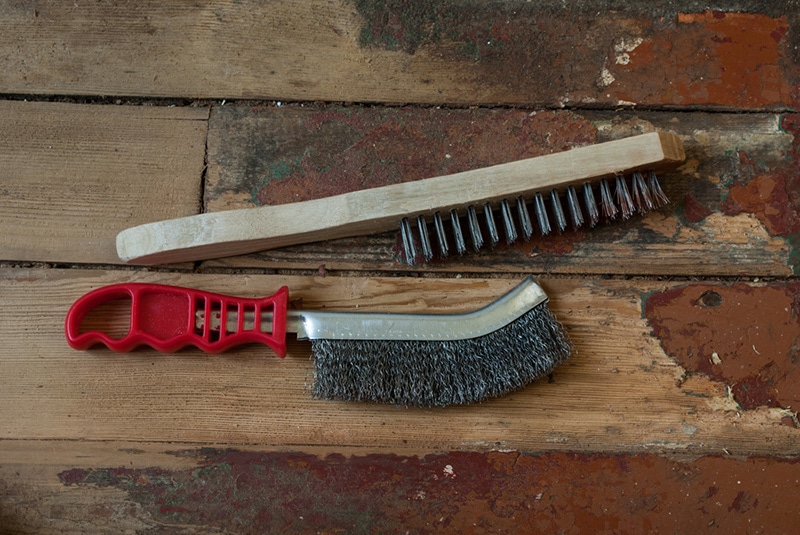
Leave Large Gaps for Butt Welds
The weld cannot permeate through the zinc coating to the metal underneath in galvanized steel. So, leave a large gap for butt welding if you won’t remove the zinc coating. This way, you can get the right amount of weld penetration.
The size of this gap will vary depending on the thickness and type of steel you are working with. But it should always be larger than 1/8 inch.
Use Anti-Spatter Spray
Regardless of the welding technique you use, zinc impurities generate a lot of spatters when welding. Spatter is caused by burning metal particles that fly off your weld joint when creating it.
Anti-spatter spray is a chemical solution that prevents weld spatter from sticking to your metal and causing unsightly marks on the surface. Use it before every weld joint to make sure you get a clean result. It also makes it much easier for you to clean up afterward.
Re-Galvanize the Steel After Welding
After finishing welding galvanized steel, ensure you re-galvanize it to prevent further corrosion over time. Also, it’ll ensure that your new piece of equipment lasts longer than expected.
You can do this by dipping your piece into an electroplating tank filled with hot zinc chloride solution. Also, you can spray it with a mixture of zinc chloride solution and water. Do this until the zinc coating reaches its desired thickness.
Risks Associated with Welding Galvanized Steel
Usually, the risks associated with welding galvanized steel are due to the zinc coating. You should be aware of a few dangers to protect yourself and those around you from these hazards.
Here are some of them.
Burns
When you weld galvanized steel, it burns at a high temperature. It can cause burns on your skin. You should wear protective clothing, such as gloves and eye protection while welding this material.
Spatter
Spatter occurs when molten metal hits air instead of your work surface or electrode wire. It’s dangerous because it splatters onto your clothes, skin, and eyes. It can cause severe burns or blindness if you’re not careful when working around it.
Zinc Fumes
Zinc fumes can cause respiratory problems, such as headaches and sore throats. These fumes are produced when you cut or weld galvanized steel.
When cutting, keep your face away from the sparks produced by the cutters. This way, you’ll avoid inhaling any of these toxic fumes. Also, wear a respirator mask. You won’t breathe in any zinc fumes released during the welding process.
Long Term Health Issues
Galvanized coating has small lead content. The lead forms lead oxide fumes after vaporizing, which can cause lung cancer after prolonged exposure to the fumes. If you always work with galvanized steel, you have an increased risk of developing lung cancer later in life.
Final Thoughts
Welding galvanized steel can be tricky, but with a little know-how and suitable tools, you can weld it. The key is to remember that welding galvanized steel needs a different setup than iron or steel.
The material is harder than more traditional metals, but there are ways to simplify this process. The key to successful welding is getting your setup right in terms of safety and using the proper techniques to get an excellent weld.
Featured Image Credit: Levent sezgin, Shutterstock
